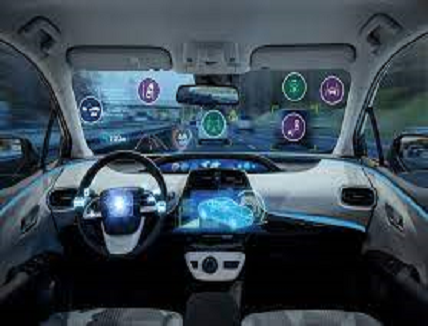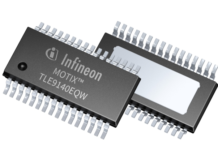
Around 1.4 million people per year lose their lives in traffic accidents worldwide. In the US, fatal car accidents are frequently caused by distracted driving. In addition to human error, extreme weather tends to increase the likelihood of accidents. However, the use of ADAS systems could greatly improve road safety.
Statistics show that 95% of crashes worldwide are caused by human error. It is imperative to factor out possible human errors on the road to zero-accident mobility, and ADAS (advanced driver-assistance systems) has the ideal solution. To be clear, ADAS refers to a group of electronic, intelligent systems that are installed in cars to assist the driver and create an automated environment.
Modern cars come equipped with a wide range of ADAS features and technologies that have the potential to save up to 4.2 billion in public spending, 60,000 fatal accidents, and roughly 900 lives. According to recent studies, nearly 4,8000 hospitalized victims worldwide could have been prevented by the use of features like adaptive cruise control (ACC), autonomous emergency braking (AEB), automated parking assistance, blind spot detection systems, adaptive headlights, and tire pressure monitoring, to name a few.
What’s driving the surge in the demand?
Over time, it has been noted that governing bodies and laws intentionally try to keep up with technological advancements, and ADAS systems are no exception. Numerous features that aid with automatic emergency, gaze detection, steering tasks, weather condition detection, warning, and braking are anticipated to increase largely due to regulatory interest in safety features that protect drivers and lower accident rates. Several significant studies indicate that the European Union and the United States will require autonomous emergency braking and forward collision warning systems for all vehicles by the year 2020.
When it comes to comfort and efficiency, new car buyers have different opinions about automated and conventional vehicles. Research shows a decline in respondents who believe traditional vehicles to be the most financially feasible option. Almost 56% of those surveyed, now believe that autonomous vehicles are a practical option in terms of cost, sustainability, and comfort. According to more than 50 per cent of respondents, self-driving cars will be the upcoming status symbol. Another 54 per cent of the participants believe autonomous vehicles will ensure the best fuel economy.
Major players join the race
Several OEMs and tech behemoths like Google have entered the automotive industry. Therefore, any ADAS technology that receives early support may benefit when self-driving cars are commercially available. Many semiconductors companies that have so far traditionally isolated themselves are now seen participating in the automotive sector – developing and offering ADAS products. With the market capitalization nearing $16 billion, companies such as Denso, Gentex and Faar are leading the race for suppliers offering autonomous technology . ZF Friedrichshafen, a manufacturer of automotive components, is one of the biggest businesses, with annual revenues of almost $43 billion and approximately 141,000 employees. The company builds almost all ADAS products ranging from radar, cameras, and other communication systems as a part of its product catalogue. ZF Friedrichshafen has also caught a lot of attention for its newly developed vehicle computer, ProAI RobTohink that’s believed to process 150 trillion per second.
Software plus hardware keep the demands high
Vehicle safety technology is ever-evolving, and prominent automakers are envisioning a world with zero collisions. Currently, those operating a vehicle make most of the decisions. However, with ADAS at work, crucial decisions can now be made by the systems. Sensors play a major role in ensuring adequate safety, based on a specific situation. A standard ADAS sensor suite includes LIDAR, cameras, ultrasound, and RADAR technologies.
The rapid adoption of digitization technologies including yet not limited to AI (artificial intelligence), deep learning, cloud, and mobility can now help measure accurately the velocity and the relative position between different moving and static vehicles or objects. Researchers reveal that the ADAS market is likely to cross the earlier estimated $74.57 billion mark by 2030. Companies like KPIT have strengthened their capabilities in the area of ADAS software development over the last 10 years.
It’s really intriguing to note that pedestrian avoidance systems have consistently ranked highly among respondents in surveys that have been conducted all over the world. In 2022, the percentage increased from 15 in 2020 to 35. Additionally, systems like an automatic parking system (16%), automatic emergency braking components (40%), lane departure warning technology (38%) and detection system (34%) too made it to the list of options.
Countries make generous investments to keep the demand high
The chase for excellence in the ADAS market is quite prominent in countries such as Germany, France, Canada and India. Hyundai has now confirmed that the Ioniq 5 will receive the SmartSence Level 2 advanced driver assistance systems (ADAS), following the announcement of the beginning of bookings for the vehicle in India. The Sweden-based company, Volvo’s CEO Jim Rowan anticipates that its upcoming affordable EV will help it increase its global sales to 1.2 million units (per the article published in Automotive News).
Despite being present in relatively few vehicles, this ADAS Technology is very impressive, particularly at night when it may be more difficult to see pedestrians and prevent casualties. Although the adaption rate may currently be in the lower range, it is increasing at a consistent rate that indicates a bright future for the ADAS market.



















